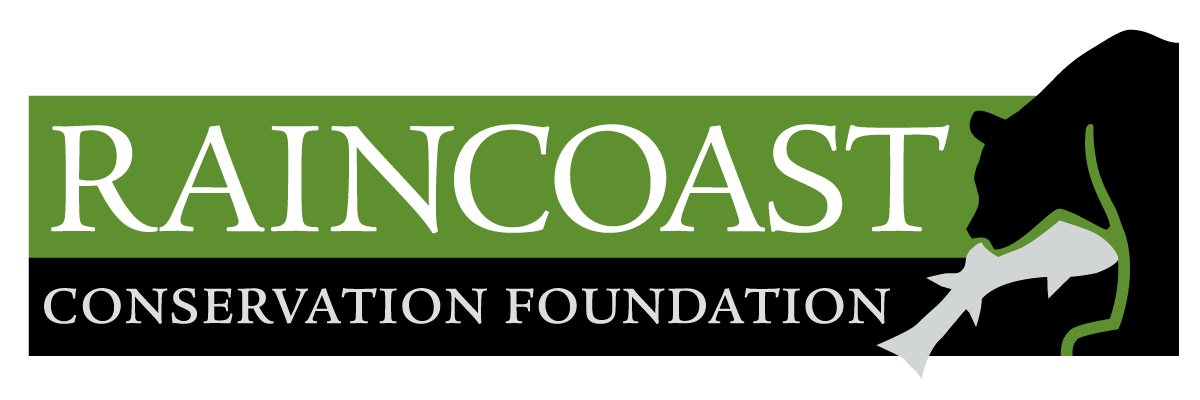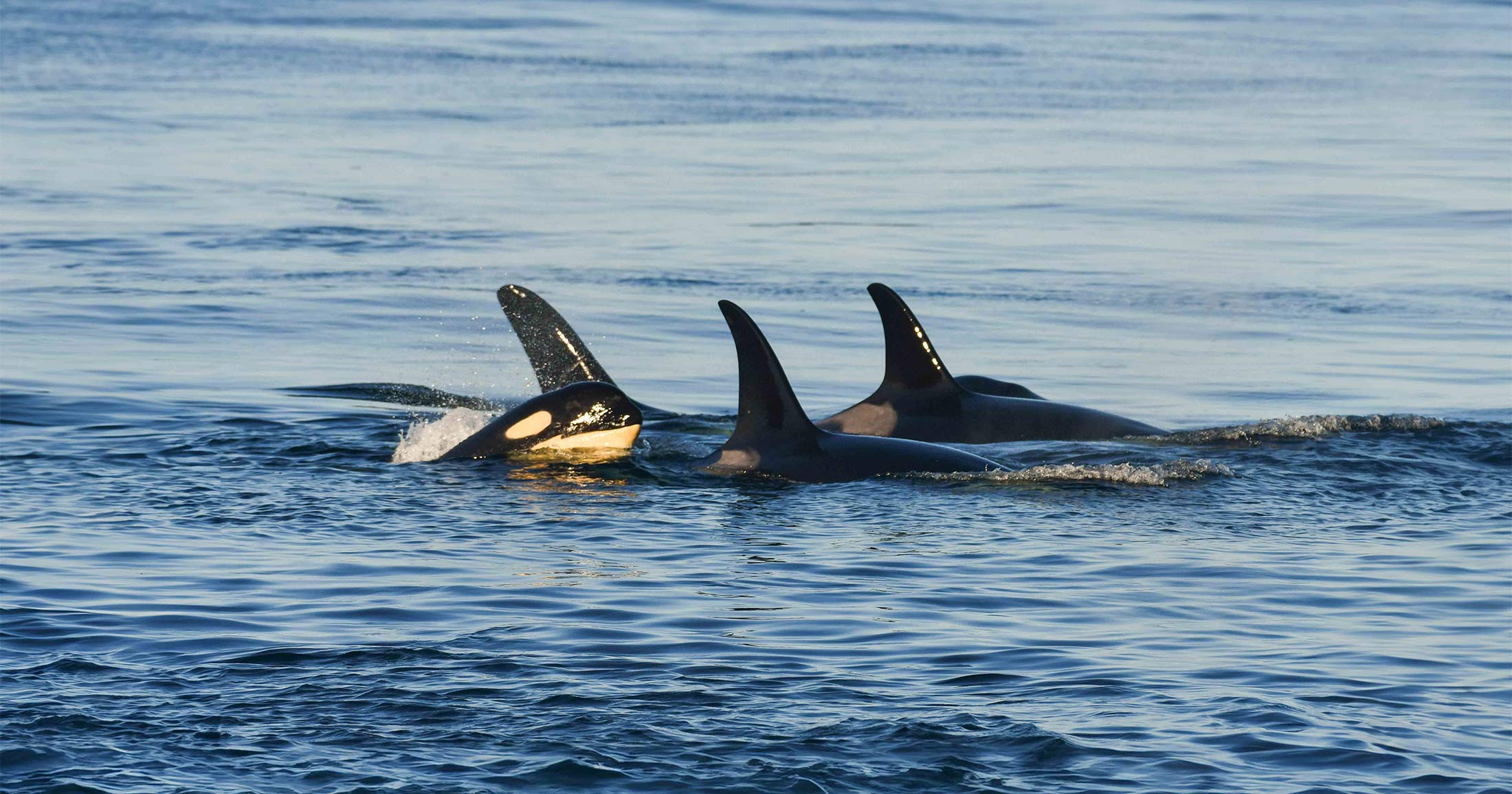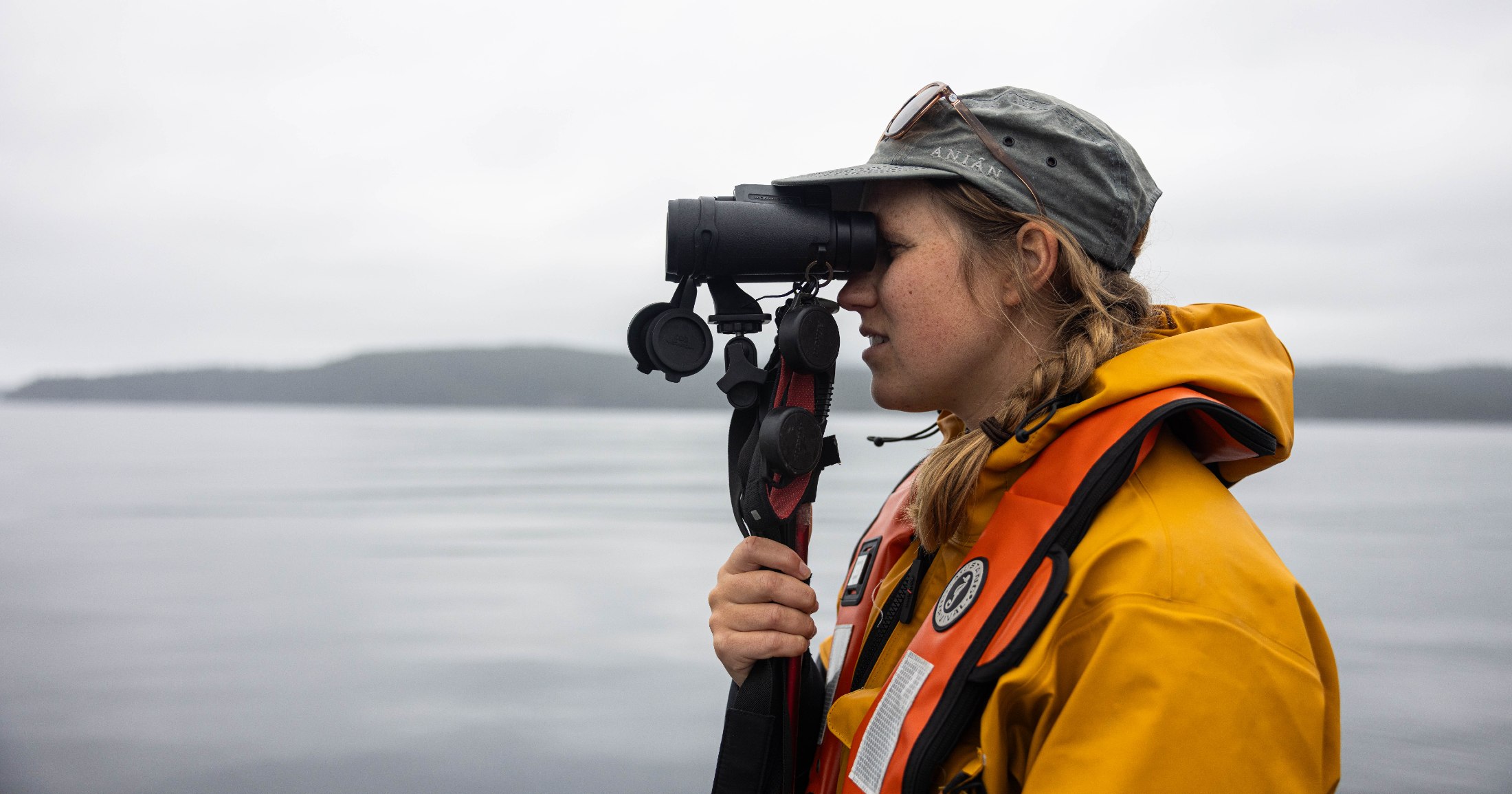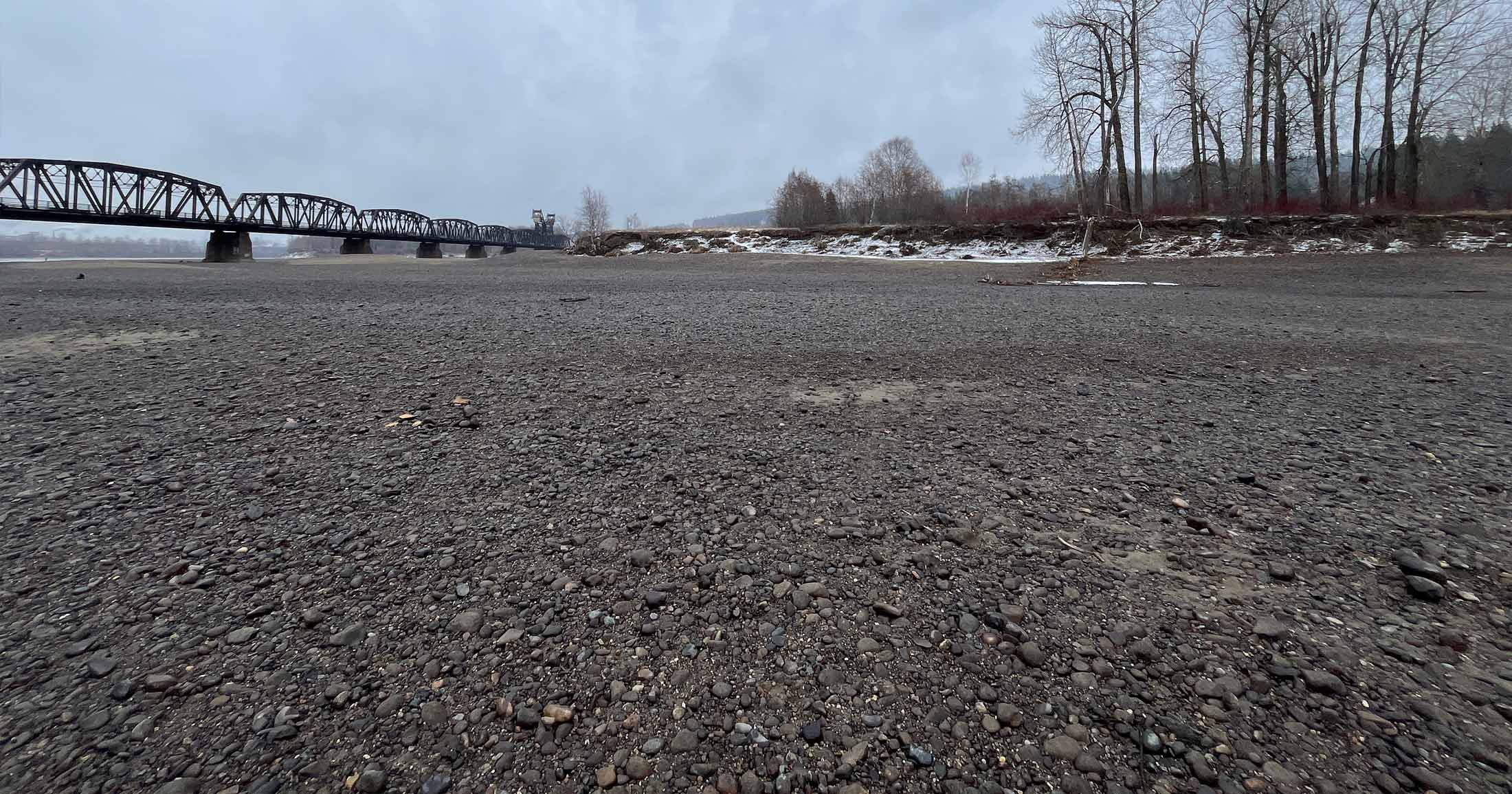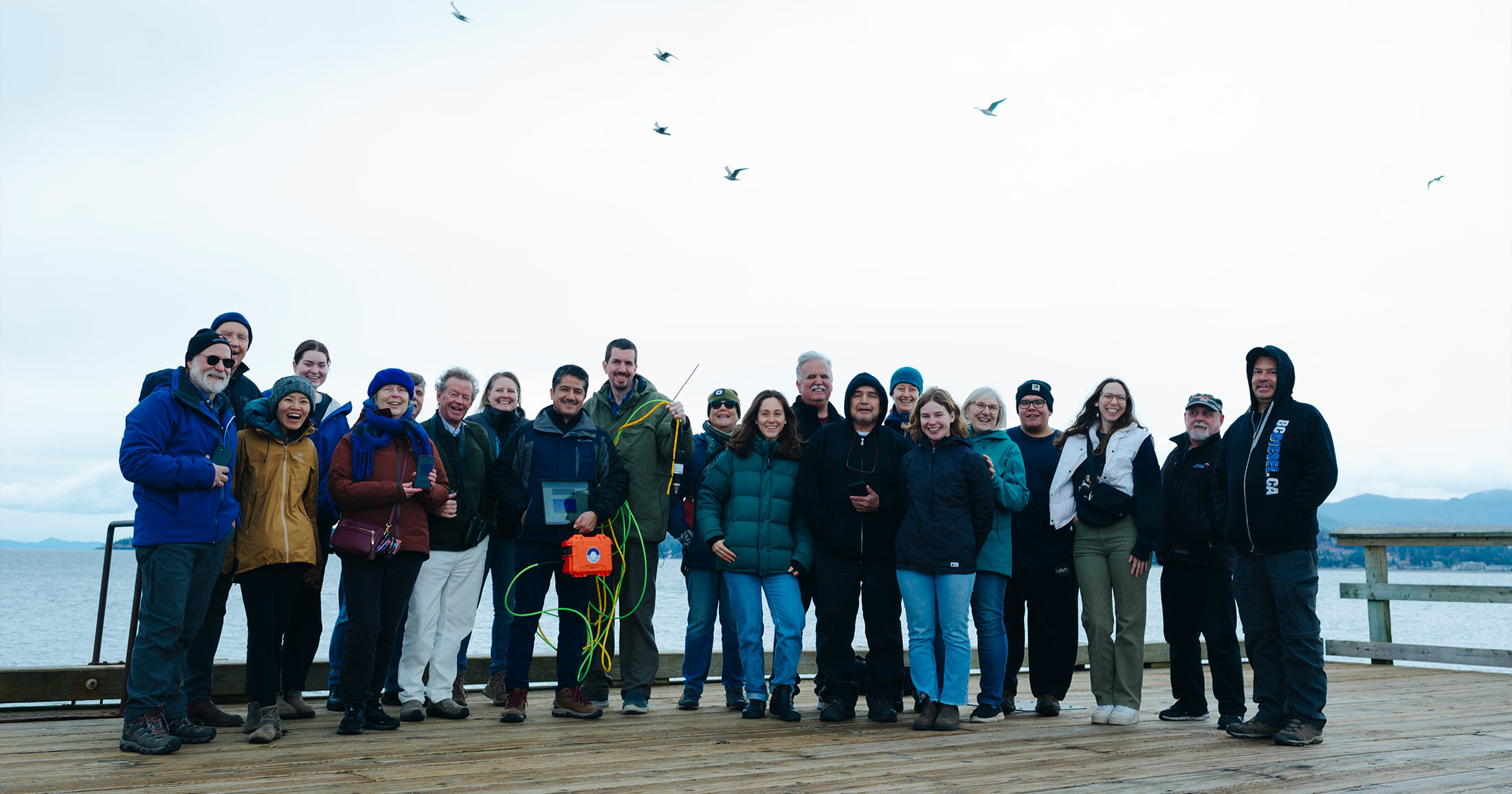BC’s coastal biodiversity: the highest in North America
As a result of a species richness mapping exercise done by North American scientists that worked for various academic and conservation agencies, it was identified that coastal BC’s marine, freshwater and terrestrial habitats supported an extraordinarily high number of vertebrates and vascular plant species. In an effort to confirm or challenge the statement that coastal BC has a greater species diversity than anywhere else in North America, we have begun to compile statistics. This site is a work in progress. We welcome input and feedback.
Biological diversity
Biodiversity, which comes from shortening the term “biological diversity,” is defined as the number, variety, and interdependence of living organisms on the planet, as well as the ecosystems of which they are a part. The conservation of biodiversity, first recognized in the early 1980s (Wilson 1988), provides economic, scientific, cultural, and aesthetic values, but its greatest value is in maintaining the life-sustaining systems of the biosphere (UNEP 1992).
The first effort at assessing the global status of biodiversity produced a report in 1992 (World Conservation Monitoring Centre 1992). In 2005, another global assessment conducted by many of the same organizations reported that humans have depleted 60% of the world’s grasslands, forests, farmlands, rivers, and lakes (MEA 2005a). They also reported that human activity is putting such a strain on the natural ecological functions that the ability of the planet’s ecosystems to sustain future generations can no longer be taken for granted (MEA 2005a).
In terms of the global state of organisms, 33% of amphibian species (Stuart et al. 2004), 12% of birds (Birdlife International 2004), and 23% of mammals (IUCN 2003) are considered vulnerable, endangered, or critically endangered. Estimates of the global rate at which organism are becoming extinct range from 100 to 1000 times the historically “normal” rate of extinction, and scenarios for the future suggest this may increase a further 10 times (UNEP 2001; MEA 2005b). This accelerated extinction is the result of human activities such as altering and destroying habitat, pollution, over-harvesting species, introducing non-native species, and producing greenhouse gases that are causing a changing climate (Wilson 1992). Globally, the pressures on biodiversity are expected to continue or increase, further compromising the ability of these ecosystems to support human life (MEA 2005a, 2005b).
Canada’s biodiversity
Canada can be defined by its expanses of wild landscapes, rich natural heritage, and cultural diversity. The second-largest nation in the world, it encompasses a surface area of 9.98 million km² and is bordered by three oceans with 243,000 km of coastline.
Canada is the steward of major portions of the world’s tundra, boreal and temperate forest, and aquatic ecosystems. About 40 percent of the country is forests and woodlands, representing about 10 percent of the world’s total forest cover. Canada has an estimated 24 percent of the world’s wetlands and constitutes about 20 percent of its circumpolar area. It is also one of the few countries in the world that maintains large, relatively unfragmented ecosystems with functioning natural processes.
Species occurring in Canada’s diverse ecosystems include some of the largest herds of free-ranging caribou in the world, two thirds of the world’s polar bear population, and large populations of bears, wolves, lynx, and other mammals. Many of North America’s migratory birds, including songbirds, waterfowl, and shorebirds, reside in Canada during the spring and summer.
British Columbia’s biodiversity
British Columbia occupies 10% of Canada’s land area while containing more than half of Canada’s vertebrates and vascular plants and three-quarters of its bird and mammal species (BCMELP 1993). Over 300 species of birds breed each year in British Columbia – more than any other province in Canada. Sixty-five species breed nowhere else in Canada and for several other species, British Columbia (specifically coastal British Columbia) holds the majority of the world population.
Coastal BC’s biodiversity
Marine coastal ecosystems are among the most productive and diverse communities in the world (Poore and Wilson 1993). The rugged BC coast, with its characteristic fiords and islands, provides an environment that hastens the divergence of species by separating and isolating populations. As time goes by, isolated populations grow more adapted to their local environment and, in doing so, diverge in appearance or behaviour from other populations of their species. It is not surprising that 44 of the 62 vertebrate subspecies and significant populations endemic to coastal British Columbia occur on coastal islands (including Vancouver Island). As such, coastal BC is the most biologically diverse area of British Columbia. Specifically,
- 78% of all the mammal species in BC (D. Nagorsen, unpubl. data compiled for BC Ministry of Environment, 2004),
- 64% of the birds that regularly breed in BC (R. Cannings, unpubl. data compiled for BC Ministry of Environment, 2004),
- 64% of BC’s amphibians (Green 1999),
- 69% of BC’s reptiles (Gregory and Gregory 1999), and
- 67% of BC’s freshwater fish species (McPhail and Carveth 1994) are found on the coast.
Even more compelling is the extent to which endemic (meaning locally unique and native) species occur on the coast:
- Two-thirds of the mammal species and subspecies that are found only in BC occur nowhere else in the province but the coast (D. Nagorsen, unpubl. data compiled for BC Ministry of Environment, 2004).
- Three-quarters of the subspecies and significant populations of freshwater fish found only in BC are exclusive to the coast (McPhail and Carveth 1994; BC Ministry of Environment, unpub. data, 2004).
- All of the bird subspecies that breed only in BC do so exclusively on the coast (R. Cannings, unpubl. data compiled for BC Ministry of Environment, 2004).
- In the Queen Charlotte Islands alone, 8 of the 12 coastal endemic breeding birds occur, including local variants of Stellar’s jay.
- Approximately 10% (238 of a total 2316) of the province’s vascular plant taxa, including subspecies and varieties, occur only on the Pacific coast between Alaska and Mexico (Douglas et al. 2002).
Coastal and marine birds
There are over 200 species of common coastal birds with more than 120 species connected to our marine waters. More than five million seabirds use the B.C. coast as breeding habitat (Rodway 1991) including storm-petrels, rhinoceros auklets, ancient murrelets and Cassin’s auklets (Gaston 2008). More than 75% of the global population of Cassin’s Auklets breed and forage on islands and in the waters off the Queen Charlotte Basin.
Marine plants
Marine plants include the microscopic phytoplankton and the larger species referred to as macroalgae (seaweed) and aquatic angiosperms. In British Columbia, more than 500 species of macroalgae have been recognized, making up about 4.5 % of the world’s total marine algal species (Tunnicliffe 1993, Hall 2008).
Cold water marine corals
BC has a diverse range of cold-water corals with at least 61 recognized species (Jamieson et al. 2006) from many different groups including Gorgonian corals, Stony corals and Sea pens. Jamieson et al. (2006) provide a comprehensive overview of taxonomy of the cold-water corals of the B.C. coast.
Hexactinellid sponge reefs
BC’s marine environment contains some of the only siliceous (hexactinellid or glass sponge) reefs in the world (Thompson 1981, Prescott-Allen 2005). Hexactinellid sponge reefs were thought to be extinct until 1987, when they were discovered in the waters of BC’s Hecate Strait and Queen Charlotte Sound (Conway 1999). These glass sponge reefs can extend 18 metres in height from the sea floor and collectively cover an estimated 1,000 square kilometres (Fargo et al. 2007).
Terrestrial invertebrates
While significant efforts have been made to document species of birds and mammals, little is known about canopy arthropod communities. There are an estimated 163,487 species of insects in North America, of which only 66% are taxonomically known (Redak, 2000). In Canada, approximately half of the estimated 66,000 insects have been described, and in British Columbia there may be as many as 40,000 arthropod species, many of which are undescribed and associated with ancient forests. (Winchester, 2010 http://web.uvic.ca/~canopy/index.html). Winchester’s working group has suggested that canopies in the Pacific NW may be as diverse, if not more than, tropical rainforests.
Coastal BC ecosystems
The biodiversity of coastal British Columbia is of global importance. The province’s remaining old-growth coastal rainforests represent approximately one-quarter of all remaining coastal temperate rainforests worldwide (BCMOF 2004). These forests are globally rare, yet they have exceptionally high biological production and biological diversity. In addition, the province bears some of the global responsibility for at least 19 coastal species that, in addition to being at risk in BC, are also at risk globally (CDC 2005). Examples include the Oregon spotted frog (Rana pretiosa), an aquatic native of the Fraser Valley; the Cowichan lake lamprey (Lampetra macrostoma), a primitive fish found only in two lakes on Vancouver Island; and Keen’s long-eared myotis (Myotis keenii), a small bat that occurs in hot springs on the Queen Charlotte Islands.
References
Much of the language in the above passages is paraphrased or taken verbatim from technical papers in the British Columbia Coast and Marine Environment Project 2006, Hall’s 2008 State of the Ocean in the PNCIMA, and Biodiversity BC’s Taking Nature’s Pulse. The BC Coast and Marine Environment Project 2006 started in 2004 and was planned and funded in collaboration with Fisheries and Oceans Canada, the University of British Columbia Fisheries Centre, and the University of Victoria Geography Department, and Environment Canada. The Project focused on a region extending westward from the height of the Coast Mountains and included the marine area within Canada’s 200-mile limit. The full report can be found at http://www.env.gov.bc.ca/soe/bcce/images/bcce_report.pdf. Biodiversity BC was formed as a partnership of government and non-government collaborations in 2005. Its funding ended in 2009. The full report can be found at http://www.biodiversitybc.org/
BirdLife International. 2004. State of the World’s Birds 2004: Indicators for our changing world. Cambridge, UK.
BCMELP (Ministry of Environment, Lands and Parks). 2006. British Columbia Coast and Marine Environment Project, 2006. Biodiversity Ministry of Environment, Victoria, B.C.
BCMELP (Ministry of Environment, Lands and Parks) 2000. Extinct and Extirpated Species. Wildlife in British Columbia at Risk brochure. Wildl. Br., Victoria, BC. wlapwww.gov.bc.ca/wld/documents/extinct.pdf.
BCMOF (Ministry of Forests). 2004. 2004/05-2006/07 Service Plan. Victoria, BC. www.bcbudget.gov.bc.ca/bgt2004/sp2004/for/for_appendix1.htm.
Biodiversity BC. 2007. Taking Nature’s Pulse: The Status of Biodiversity in British Columbia. http://www.biodiversitybc.org/EN/main/where/132.html
CDC (BC Conservation Data Centre). 2005. BC species and ecosystems explorer database. Ministry of Environment, Victoria. srmapps.gov.bc.ca/apps/eswp/.
Conway, K. W. 1999. Hexactinellid sponge reefs on the British Columbia continental shelf: geological and biological structure with a perspective on their role in the shelf ecosystem. Canadian Stock Assessment Secretariat Research Document.
Douglas, G.W., D. Meidinger, and J. Pojar (eds.). 2002. Illustrated flora of British Columbia, vol. 8: General summary, maps, and keys. Minist. For. and Sustain. Resour. Manage., Victoria, BC.
Fargo, J., L. MacDougall, and I. Pearsall. 2007. Ecosystem overview: Pacific North Coast Integrated Management Area (PNCIMA): Appendix G: Groundfish.
Gaston, A. J. 2008. Seabirds. Environment Canada. in http://www.ecoinfo.ec.gc.ca/env_ind/region/seabird/seabird_e.cfm
Green, D.M. 1999. The amphibians of British Columbia: A taxonomic catalogue. Wildl. Br., Minist. Environ., Lands and Parks, Victoria, BC. Wildl. Bull. B-87.
Gregory, L.A., and P.T. Gregory. 1999. The reptiles of British Columbia: A taxonomic catalogue. Wildl. Br., Minist. Environ., Lands and Parks, Victoria, BC. Wildl. Bull. B-88.
Hall, A. 2008. State of the Ocean in the Pacific North Coast Integrated Management Area (PNCIMA). David Suzuki Foundation. 159pp.
IUCN (World Conservation Union). 2003. 2003 IUCN Red list of threatened species. www.redlist.org.
Jamieson, G. S., and L. Chew. 2002. Hexactinellid sponge reefs: areas of interest as Marine Protected Areas in the North and Central Coast. Canadian Science Advisory Secretariat Research Document:77.
Jamieson, G. S., N. Pellegrin, and S. Jessen. 2006. Taxonomy and zoogeography of cold water corals in explored areas of coastal British Columbia. Canadian Science Advisory Secretariat Research Document:49.
McPhail, J.D., and R. Carveth. 1994. Field key to the freshwater fishes of British Columbia: Draft for 1994 Field Testing. Aquatic Inventory Task Force, Resources Inventory Committee, Victoria, BC.
MEA (Millennium Ecosystem Assessment). 2005a. Ecosystems and human well-being: Biodiversity synthesis. World Resources Institute, Washington, DC. www.millenniumassessment.org//en Products.Synthesis.aspx.
MEA (Millennium Ecosystem Assessment). 2005b. Ecosystems and human well-being: Synthesis. World Resources Institute, Washington, DC. www.millenniumassessment.org//en/Products.Synthesis.aspx.
MEA (Millennium Ecosystem Assessment). 2005c. Ecosystems and human well-being: Wetlands and water synthesis. World Resources Institute, Washington, DC. www.millenniumassessment.org//en/Products.Synthesis.aspx.
Prescott-Allen, R. 2005. Coast Information Team Review Report. Cortex Consultants Inc.
Poore, G.C.B., and G.D.F. Wilson. 1993. Marine species richness. Nature 361:597-598.
Redak, Richard. 2000. Arthropods and Multispecies Habitat Conservation Plans: Are We Missing Something? Environmental Management, Volume 26, Supplement 1
Rodway, M. S., and M. J. F. Lemon. 1991. British Columbia seabird colony inventory: Report # 8 – Queen Charlotte Strait and Johnstone Strait. Technical Report Series 123:82.
Stuart, S.N., J.S. Chanson, N.A. Cox, B.E. Young, A.S.L. Rodrigues, D.L. Fishman, and R.W. Walter. 2004. Status and trends of amphibian declines and extinctions worldwide. Science 306:1783-1786.
Thompson, R. E. 1981. Oceanography of the British Columbia coast. Canadian Special Publications of Fisheries and Aquatic Sciences 56:291.
Tunnicliffe, V. (1993) Biodiversity: the marine biota of British Columbia. in Our Living Legacy: Proceedings of a Symposium on Biological Diversity. M. A. Fenger, E. H. Miller, J. A. Johnson & E. J. Williams (eds), Royal B. C. Museum, Victoria: pp. 191-200.
UNEP (United Nations Environment Programme). 1992. Preamble, convention on biological diversity. United Nations. www.biodiv.org/convention/articles.asp.
UNEP (United Nations Environment Programme). 2001. Global biodiversity outlook. United Nations. www.biodiv.org/gbo/default.asp.
Wilson, E.O. (ed.). 1988. Biodiversity. National Academy Press, Washington, DC., 521pp.
Wilson, E.O. 1992. The diversity of life. W.W. Norton and Co., New York.
Winchester, Neville http://web.uvic.ca/~canopy/winchest.html
World Conservation Monitoring Centre. 1992. Global biodiversity: Status of the Earth’s living resources. Chapman and Hall, London, UK. xx + 594pp.
Support our mobile lab, Tracker!
Our new mobile lab will enable the Healthy Waters Program to deliver capacity, learning, and training to watershed-based communities. We need your support to convert the vehicle and equip it with lab instrumentation. This will allow us to deliver insight into pollutants of concern in local watersheds, and contribute to solution-oriented practices that protect and restore fish habitat.

